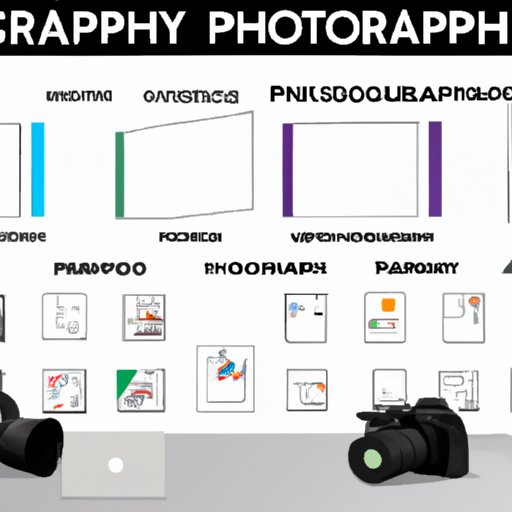Introduction
Starting a photography business is no easy feat. It requires a lot of planning, research, and hard work. But if you’re passionate about photography and have what it takes to make it as a photographer, then taking the leap can be incredibly rewarding. This article will provide an overview of the steps needed to get your photography business off the ground, from creating a business plan to finding the right equipment, designing a professional website and portfolio, marketing online and offline, and building relationships with clients.
Create a Business Plan
The first step in starting a photography business is to create a business plan. A business plan outlines your goals and helps to keep you on track as you move forward. It should include an overview of the services you offer, pricing structure, and any other relevant information that will help you to stay organized and focused.
Outline Goals
Start by setting short-term and long-term goals for your business. Consider where you want to be in 1 year, 5 years, and 10 years. Think about what type of photography you want to specialize in (e.g., weddings, portraits, events, etc.), and what type of clients you want to target. This will help you to focus your efforts and ensure that you’re headed in the right direction.
Services & Pricing
Next, decide which services you will offer and how much you will charge for them. Make sure to do your research and figure out what other photographers in your area are charging for similar services. You don’t want to undercut yourself, so make sure you’re charging a fair price. Consider offering package deals, discounts, or special offers to attract more customers.
Find the Right Equipment for Your Niche
Once you have a business plan in place, it’s time to start thinking about the equipment you need. Different types of photography require different types of gear, so you’ll need to do some research to find out what type of equipment is best suited for your niche.
Researching Options
Start by researching the type of camera, lenses, and other accessories that are best for the type of photography you want to do. Read reviews, talk to other photographers, and try out different pieces of equipment to get a feel for what works best for you.
Consider Budget & Quality
It’s also important to consider your budget when purchasing equipment. You don’t need the most expensive camera or lenses to take great photos, but you do need good quality equipment that will last. Look for deals and secondhand options if you’re on a tight budget.
Design a Professional Website & Portfolio
Having a professional website and portfolio is essential for any photography business. It’s the best way to showcase your work and attract potential clients. Here’s what you need to consider when creating your website and portfolio.
Selecting a Platform
First, you need to select a platform for your website. There are many options available, including WordPress, Squarespace, Wix, and Weebly. Each platform has its own pros and cons, so it’s important to do your research and choose one that’s right for you.
Crafting an Engaging Design
Once you’ve selected a platform, you can start designing your website. Choose a design that’s clean and easy to navigate, and make sure to include images of your work. You should also include a contact page so potential clients can easily get in touch with you.
Market Your Business Online & Offline
Marketing your business is key to attracting new clients. You need to make sure people know who you are and what you offer. Here are some tips for marketing your photography business online and offline.
Social Media Marketing
Social media is a great way to market your photography business. Create accounts on platforms like Instagram and Facebook, and post regularly to showcase your work. Engage with potential clients and use hashtags to reach a wider audience.
Traditional Advertising
Don’t forget about traditional forms of advertising, such as flyers, postcards, and newspaper ads. These can be effective in reaching a local audience and getting your name out there. You could also consider partnering with local businesses to create joint promotions.
Network & Build Relationships With Clients
Networking and building relationships with clients is also important for any photography business. Attend events, join photography groups, and reach out to potential clients to let them know about your services. Ask for referrals and testimonials to help spread the word.
Developing a Network
Start by joining photography networks and organizations. These are great places to meet other photographers and learn more about the industry. They can also be useful for finding potential clients.
Establishing Relationships
Once you’ve developed a network, start reaching out to potential clients. Introduce yourself and explain what you do. Offer to answer any questions they may have and provide samples of your work. Building relationships with clients is key to success in the photography business.
Conclusion
Starting a photography business is a big undertaking, but with the right knowledge and dedication, it can be incredibly rewarding. This article has provided an overview of the steps needed to get your photography business off the ground, from creating a business plan and finding the right equipment to designing a professional website and portfolio, marketing online and offline, and building relationships with clients. With the right approach and a bit of hard work, you can make your dream of becoming a successful photographer a reality.
(Note: Is this article not meeting your expectations? Do you have knowledge or insights to share? Unlock new opportunities and expand your reach by joining our authors team. Click Registration to join us and share your expertise with our readers.)
